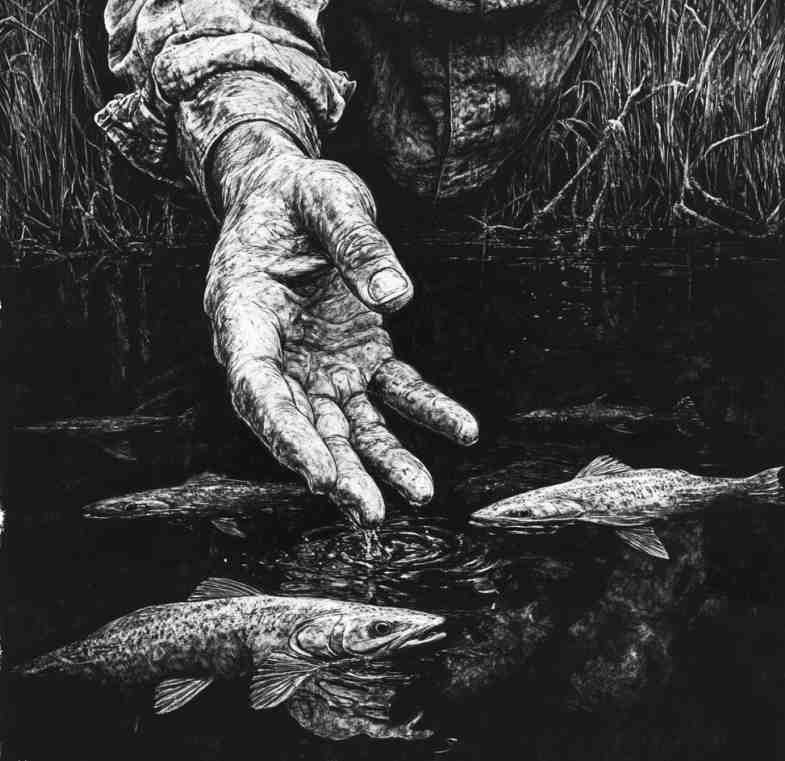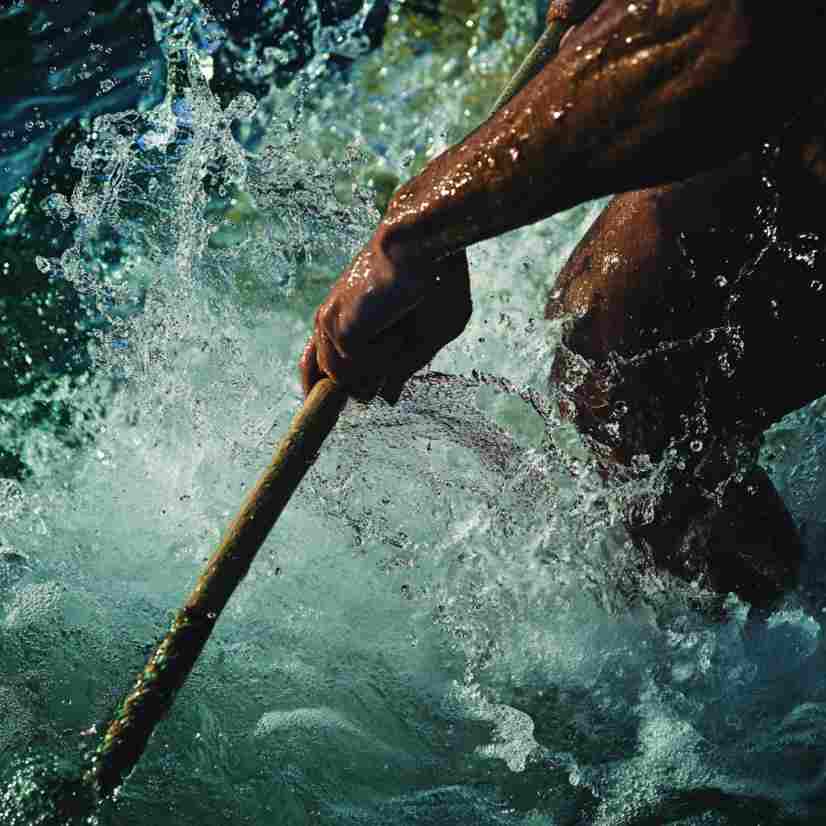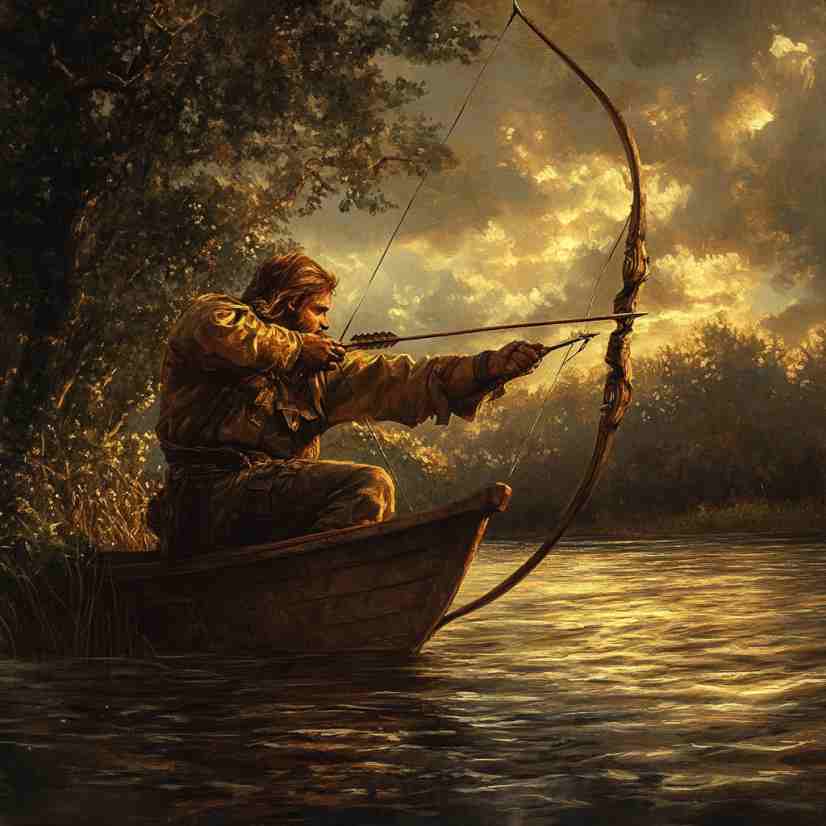Survive the Wild: Master These 5 Essential Fishing Techniques!

Make sure to like Living Green and Frugally on Facebook, Shop at Amazon to help support my site and explore our PINTEREST BOARDS for innovative ways you can become self-sufficient.
Survive the Wild: Master These 5 Essential Fishing Techniques!
When it comes to surviving in the wild, knowing how to catch fish can be a crucial skill. Whether you’re lost in the woods or trying to provide for yourself during an outdoor adventure, mastering a few key fishing techniques can mean the difference between hunger and sustenance. Here are five essential fishing techniques you should learn to boost your survival skills.
1. Hand Fishing (Noodling)
Noodling, or hand fishing, is an ancient technique that involves catching fish using your bare hands. While it may sound daunting, it can be incredibly effective for larger species like catfish. Here’s how to do it:
- Find a Suitable Location: Look for areas where fish are likely to hide, such as under logs, rocks, or in holes along riverbanks.
- Gently Reach In: Submerge your hand into the water and feel around for fish. Be prepared for the surprise of a fish grabbing your hand!
- Secure the Catch: Once you feel a fish, grip it firmly and pull it out of the water. Be cautious, as larger fish can put up a fight.
Tip: This technique is best practiced in warm waters where fish are more active.

2. Trapping with a Fishing Net
Using a fishing net is a straightforward and effective way to catch multiple fish at once. You can create a simple net trap using natural materials or a store-bought net.
- Create Your Trap: If you’re using natural materials, fashion a funnel-like trap from branches and vines. Place it in shallow water, ensuring the narrow end points downstream.
- Bait the Trap: Use bait like bread or small fish to attract larger ones into your trap.
- Check Regularly: Check the trap frequently to see if you’ve caught anything.
Tip: This method allows you to catch fish without needing to stay by the water constantly.

3. Using a Spear
Spear fishing is a skill that dates back to ancient civilizations and is still effective today. It requires patience and precision but can yield great rewards.
- Choose the Right Spear: You can make a simple spear by sharpening a sturdy stick or use a multi-pronged spear for better accuracy.
- Spot Your Target: Look for fish in shallow waters or near the surface. The clearer the water, the better your chances.
- Aim and Strike: Stay low to the water’s surface to avoid startling the fish, then quickly thrust the spear downwards when you’re close enough.
Tip: Practicing your aim on land can help you refine your technique before trying it in the water.

4. Using a Fishing Line and Hook
Traditional fishing with a line and hook is one of the most reliable methods to catch fish. It requires minimal gear, making it ideal for survival situations.
- Make Your Hook: You can fashion a hook from a bent piece of metal or even a sturdy thorn.
- Set Up Your Line: Use any available string, vine, or even dental floss to create your fishing line. Tie your hook securely at one end and bait it with whatever you have.
- Cast and Wait: Cast your line into the water and wait patiently for a bite. Be sure to check your line regularly.
Tip: If you’re in an area with plenty of natural bait, such as worms or insects, use those for better results.

5. Fishing with a Bow and Arrow
Bow fishing combines archery with fishing, allowing you to catch fish from above the water’s surface.
- Choose Your Bow: A simple bow can be made from a sturdy branch and some cordage. If you have access to a fishing arrow, that’s even better.
- Spot Your Target: Find a good vantage point along the water’s edge or in a canoe. Look for fish swimming near the surface.
- Aim Carefully: Remember that water refracts light, so aim slightly below where you see the fish to account for this. Release your arrow when you’re ready.
Tip: This method requires practice to master, so consider working on your archery skills in a safe environment first.

FAQs for “Survive the Wild: Master These 5 Essential Fishing Techniques!”
Q1: What are the best fishing techniques for beginners in survival situations?
A1: For beginners, hand fishing (noodling) and using a fishing line and hook are the most accessible techniques. They require minimal equipment and can be learned quickly. Trapping with a fishing net is also a great way to catch multiple fish without needing constant supervision.
Q2: Can I use any type of hook for fishing?
A2: Yes, you can create hooks from various materials, such as metal scraps, thorns, or even branches. Just ensure they are sharp and sturdy enough to hold onto the fish once caught.
Q3: Is spear fishing safe for beginners?
A3: Spear fishing can be safe if practiced in shallow waters where visibility is good. Beginners should focus on areas with fewer obstacles and take their time to aim carefully. Always be aware of your surroundings and avoid spear fishing in murky waters.
Q4: What bait should I use for fishing?
A4: Natural baits like worms, insects, small fish, or even bread can attract fish effectively. The type of bait may vary based on the species you are targeting, so observe what’s available in your environment.
Q5: How do I know if my fishing line is getting a bite?
A5: If you’re using a traditional fishing line, you’ll notice a tug or a pull on the line. Be attentive and check your line regularly. If you’re using a set line or trap, inspect it frequently for any caught fish.
Q6: What should I do if I catch a fish?
A6: Once you catch a fish, handle it carefully to avoid losing it. Depending on your situation, you can clean and cook it immediately or store it for later. Always follow safe food handling practices to avoid any health risks.
Q7: Are there any legal considerations for fishing in the wild?
A7: Yes, always check local regulations regarding fishing in specific areas. Some regions require permits or have specific rules about fishing techniques, catch limits, and seasons. Being informed ensures you’re fishing legally and sustainably.
Conclusion
Mastering these five fishing techniques can significantly increase your chances of survival in the wild. Whether you’re hand fishing, using a net, or honing your archery skills, being able to catch fish not only provides nourishment but also builds confidence in your outdoor abilities. Practice these techniques in safe environments to ensure you’re prepared when the time comes to rely on them. Happy fishing!